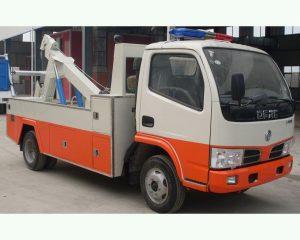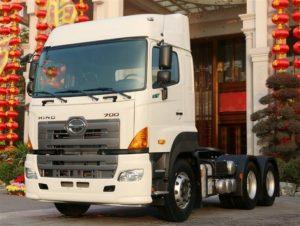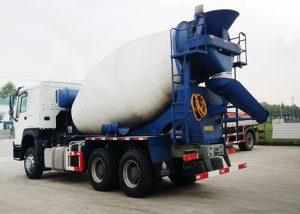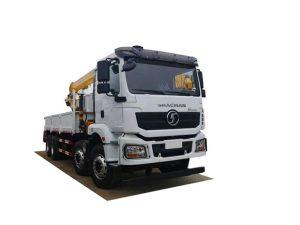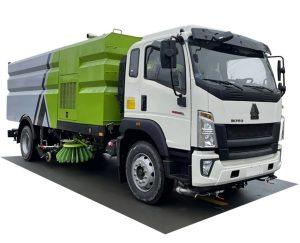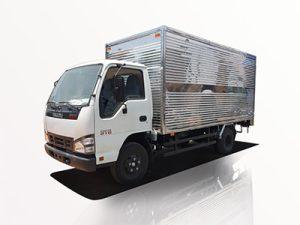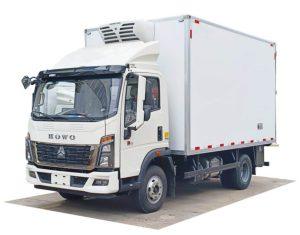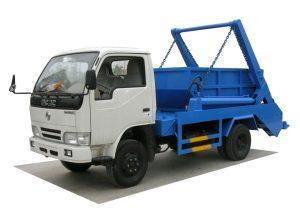Monday to Saturday - 8:00 -17:30
Flat Bed Wrecker: The Ultimate Guide
When it comes to towing, the flat bed wrecker is an essential vehicle in the industry. Known for its versatility and efficiency, it provides an effective solution for transporting a wide range of vehicles. In this comprehensive guide, we will explore the functionality, benefits, and operational specifics of flat bed wreckers, along with practical examples and tips. Whether you are a towing professional, a vehicle owner, or simply curious about this subject, this article has you covered.
What is a Flat Bed Wrecker?
A flat bed wrecker, also known as a flatbed tow truck, is a specialized vehicle designed for towing cars and trucks. Unlike traditional tow trucks that lift vehicles from the front or rear, flat bed wreckers feature a completely flat platform that allows the entire vehicle to be loaded onto the bed. This design minimizes the risk of damage while transporting.
Key Features of Flat Bed Wreckers
1. Design and Structure
The flat bed wrecker is characterized by its flat, open bed, which is typically equipped with ramps to assist in loading and unloading vehicles. This allows for easy access and a secure transport method.
2. Weight Capacity
These wreckers usually have a significant weight capacity, often ranging from 5,000 to 20,000 pounds. The weight limit depends on the truck’s model and specifications, making it suitable for various types of vehicles from compact cars to larger SUVs and trucks.
3. Winch System
Most flat bed wreckers are equipped with a winch system that aids in loading vehicles that cannot be driven. This feature is essential for dealing with cars that are damaged or inoperable.
4. Safety Features
Flat bed wreckers come with various safety features, including tie-down straps and wheel chocks to secure the vehicle during transport. Some models may also feature advanced lighting systems for enhanced visibility during nighttime operations.
Benefits of Using a Flat Bed Wrecker
1. Damage Prevention
One of the most significant advantages of using a flat bed wrecker is that it reduces the risk of damage to the vehicle being towed. Since the entire vehicle is on a flat surface, the risk of scratches and dents is minimized compared to traditional towing methods.
2. Versatility
Flat bed wreckers can transport various types of vehicles, including motorcycles, cars, and larger trucks. This versatility makes them an excellent choice for towing companies that deal with diverse vehicles.
3. Enhanced Stability
The flat platform provides a stable base, which is especially important for long-distance towing. This stability ensures that the vehicle remains secure during transport, reducing the potential for accidents or further damage.
4. Capability to Tow Inoperable Vehicles
With a winch system in place, flat bed wreckers can easily tow vehicles that cannot be driven. This capability makes them invaluable for recovery situations or when dealing with vehicles involved in accidents.
Types of Flat Bed Wreckers
1. Standard Flat Bed Tow Trucks
Standard flat beds are primarily used for local towing services and are versatile enough for small to medium vehicles.
2. Extended Flat Bed Tow Trucks
These vehicles have a longer and wider bed, making them suitable for larger vehicles and multiple smaller vehicles simultaneously.
3. Low-Profile Flat Bed Tow Trucks
Designed for sports cars or vehicles with low ground clearance, these include a ramp that minimizes the angle, ensuring safer loading.
Flat Bed Wrecker Operations
1. Loading Procedures
Proper loading is critical for safety. Here’s a step-by-step guide:
- Assess the vehicle: Check for any additional damage or hazards.
- Align the wrecker: Position the flat bed next to the vehicle at a slight angle.
- Deploy the ramps: Lower the loading ramps and use the winch to pull the vehicle onto the bed.
- Secure the vehicle: Use straps or chains to tie down the vehicle to the flat bed.
2. Unloading Procedures
The unloading process is just as important to ensure safety and prevent damage.
- Position the wrecker: Place the flat bed in a safe area for unloading.
- Release the winch: Unfasten the straps or chains.
- Lower the ramps: Carefully descend the ramps to the ground.
- Drive off: Allow the vehicle owner to drive their vehicle off the flat bed or use the winch for inoperable vehicles.
Important Safety Tips During Operations
- Always wear personal protective equipment (PPE).
- Ensure the area around the wrecker is clear of obstacles.
- Check for any traffic hazards before opening the flat bed.
Choosing the Right Flat Bed Wrecker for Your Needs
1. Assessing Your Towing Capacity Requirements
Before purchasing or renting a flat bed wrecker, evaluate the types of vehicles you will be towing and select a model that meets those capacity needs.
2. New vs. Used Flat Bed Wreckers
Consider whether you want to invest in a new or used flat bed wrecker based on your budget and intended use. New trucks come with warranties but at a higher cost, while used trucks are more affordable but may require maintenance.
3. Understanding Maintenance Requirements
Regular maintenance is key to the longevity of a flat bed wrecker. Schedule inspections and maintenance checks to prevent costly breakdowns.
Cost Considerations
1. Purchase Costs
The cost of flat bed wreckers can vary wildly, depending on factors like brand, model, and condition. Prices can range from $10,000 for older used models to over $100,000 for top-of-the-line new versions.
2. Operational Costs
Operational expenses include fuel, maintenance, insurance, and licensing. These costs should be factored in when determining the overall budget for your towing business.
Legal Regulations and Licensing
1. Licensing Requirements
Operators of flat bed wreckers need to comply with local and state regulations, which may include specific commercial driver’s licenses (CDL) and permits to operate a towing business.
2. Insurance Regulations
Proper insurance coverage is essential. Towing companies must have liability insurance as well as coverage for the vehicles they transport.
Flat Bed Wrecker Examples and Applications
1. Emergency Roadside Assistance
Flat bed wreckers are often the go-to choice for emergency roadside assistance, providing help for stranded motorists or vehicles involved in accidents.
2. Transporting Luxury and Classic Cars
High-value vehicles such as luxury cars and classic models are best transported using flat bed wreckers to prevent any potential damage during transit.
3. Fleet Management Solutions
Businesses with vehicle fleets often use flat bed wreckers for transporting vehicles to maintenance facilities or between locations, ensuring that their operations remain efficient.
| Application | Description |
|---|---|
| Emergency Towing | Providing immediate assistance for inoperable vehicles on the road. |
| Vehicle Recovery | Towing vehicles from accidents or hazardous locations. |
| Transporting High-Value Vehicles | Safely moving luxury cars or show cars to events without risk of damage. |
Frequently Asked Questions (FAQ)
1. What is the weight limit for a flat bed wrecker?
The weight limit for flat bed wreckers typically ranges from 5,000 to 20,000 pounds, depending on the model and specifications.
2. Can flat bed wreckers tow inoperable vehicles?
Yes, flat bed wreckers are equipped with winch systems that allow them to tow vehicles that cannot be driven.
3. What types of vehicles can be towed with a flat bed wrecker?
Flat bed wreckers can transport a variety of vehicles, including cars, trucks, motorcycles, and even larger SUVs.
4. How often should flat bed wreckers be maintained?
Regular maintenance checks should be performed every 3,000 to 5,000 miles or as recommended by the manufacturer’s guidelines.
5. What are the safety precautions for towing with a flat bed wrecker?
Safety precautions include wearing PPE, ensuring the area is clear, checking vehicle security, and following correct loading/unloading procedures.
6. Do I need a special license to operate a flat bed wrecker?
Yes, a Commercial Driver’s License (CDL) is often required, along with any permits that your local laws may mandate.


